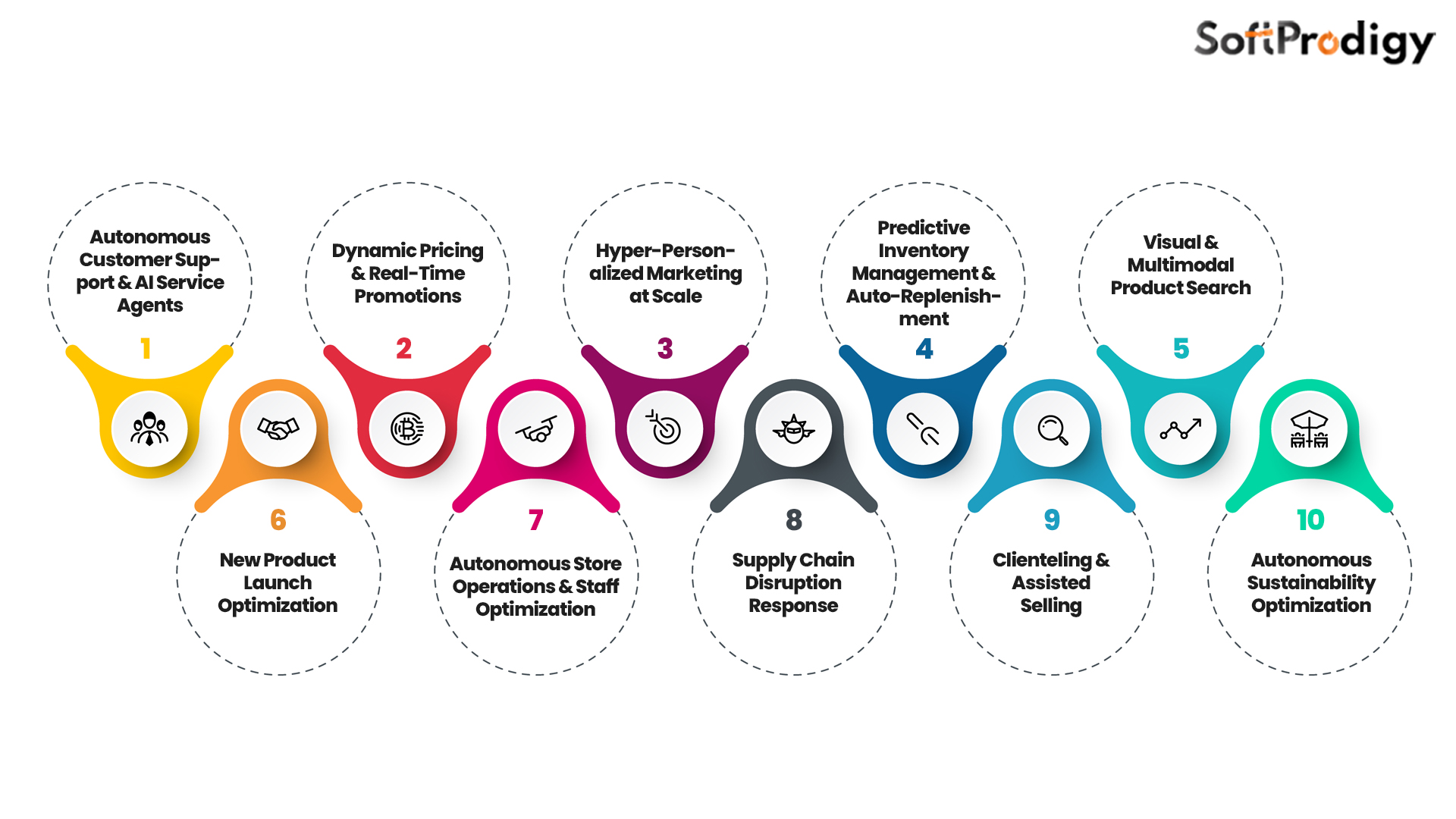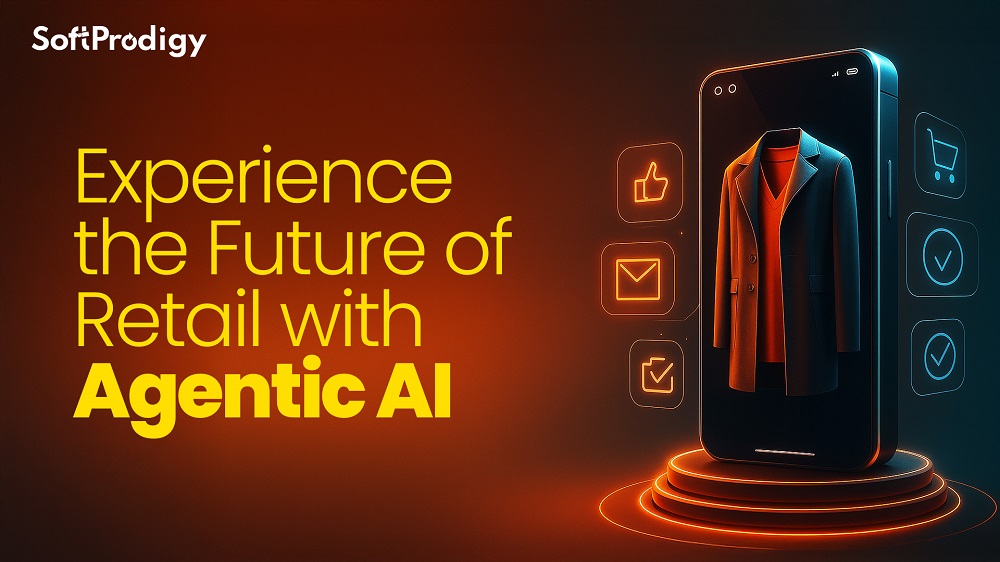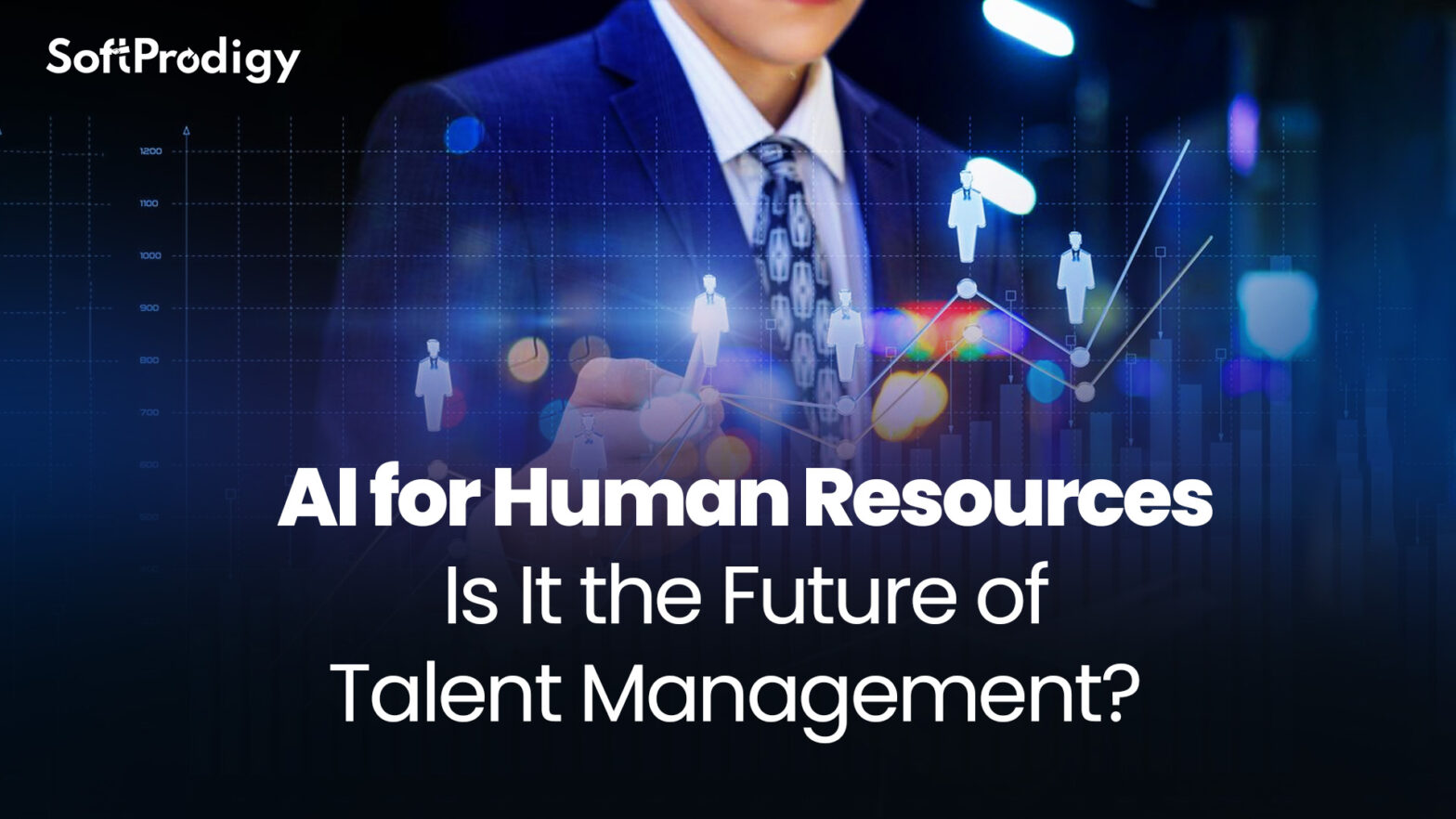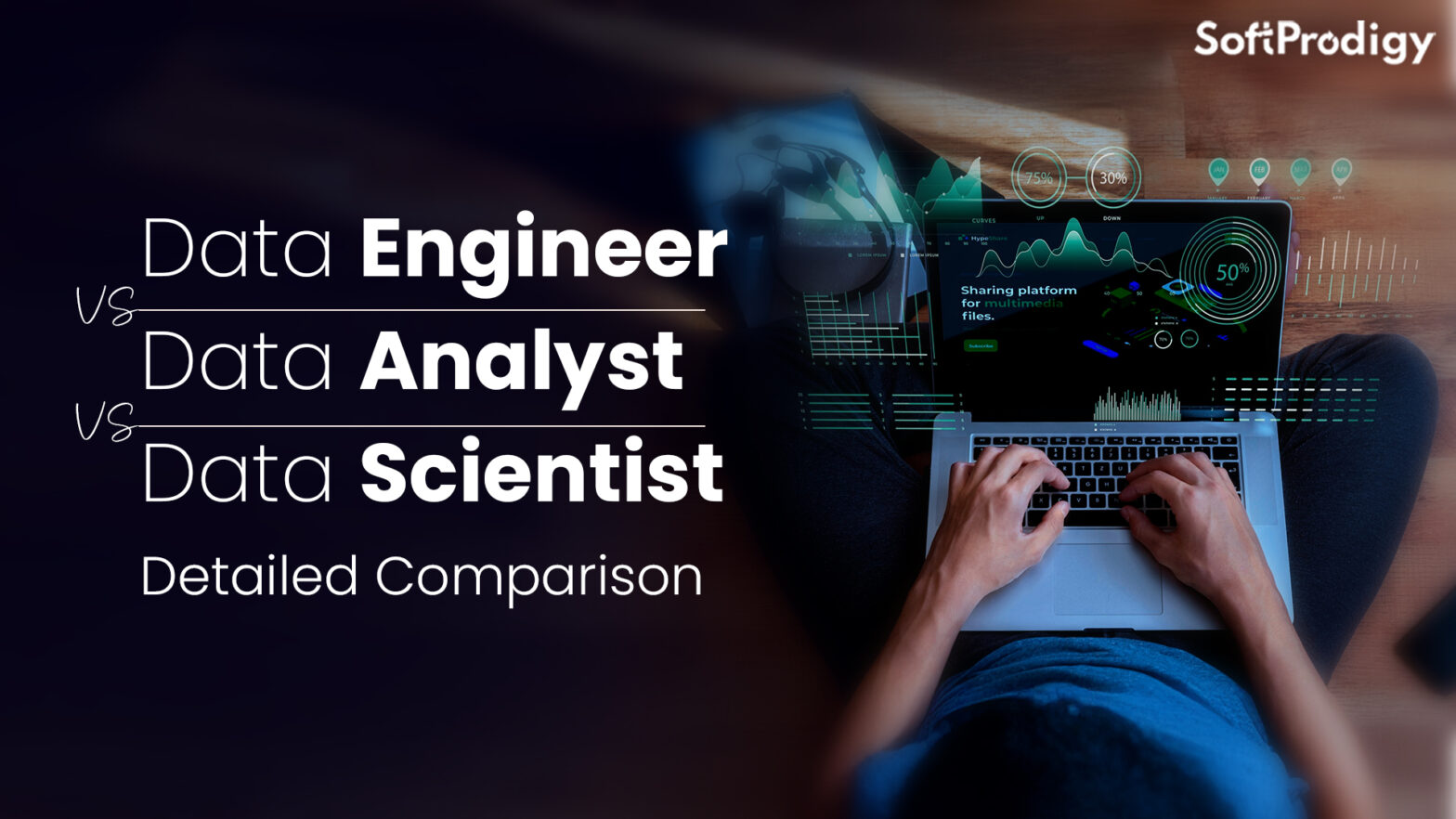Retail is racing against time. Shoppers expect instant answers, personalized offers, and seamless experiences across every channel. Yet most retailers are still stuck analyzing data when they should be acting on it. The gap between insight and action is widening.
Furthermore, every second costs sales. That’s where Agentic AI in Retail steps in.
It’s not just predictive, It’s proactive. This new wave of multimodal and voice-first intelligence senses customer intent and decides the best next move that can execute it in real time.
Result? Smarter shelves, adaptive pricing and retail that thinks for itself.
Want to explore how to use Agentic AI in retail business? Keep reading.
What Does Agentic AI in Retail Actually Mean?
When we talk about AI in retail, most people imagine chatbots, recommendation engines or predictive analytics. But artificial intelligence in retail has now evolved beyond pattern recognition.
Agentic AI represents goal-driven autonomy rather than simple rule-based automation. Traditional systems rely on “if-this-then-that” logic, while agentic systems make decisions on their own, guided by outcomes and objectives.
- Perception: They continuously monitor multiple data streams, inventory levels, and competitor pricing to stay ahead of market changes. Additionally, they track customer sentiment, weather patterns, and social media trends to understand their environment in real time.
- Decision-Making: It evaluates perceived conditions against business objectives and determines the optimal actions without waiting for human approval. These aren’t random choices but calculated decisions driven by learned patterns and defined constraints.
- Continuous Learning: Refining strategies based on outcomes. When an automated markdown generates unexpected sales velocity, the agent incorporates that insight into future pricing decisions across similar products.
How Does Agentic AI Differ from Traditional AI and Generative AI?
Now that you understand what agentic AI means in retail. Let’s explore how it fundamentally differs from traditional AI and generative AI.
| AI Type | Primary Function | Retail Application Example | When to Deploy |
|---|---|---|---|
| Traditional AI | Analyzes patterns and predicts outcomes | Forecasting holiday demand for winter coats based on historical sales data | When you need accurate predictions to inform human decisions |
| Generative AI | Creates new content from learned patterns | Writing personalized product descriptions or generating customer service responses | When scalable content creation enhances operations but humans verify output |
| Agentic AI | Autonomously acts on real-time conditions | Detecting demand surge for umbrellas during unexpected rain, automatically adjusting prices upward, triggering express shipments to nearby stores, and notifying staff, all within minutes | When milliseconds matter and human intervention creates bottlenecks |
Insider Insight: Traditional algorithms excel at stable, predictable scenarios, while generative models amplify content creation at scale. AI and machine learning development services power these foundational capabilities across retail operations.
Agentic systems represent the evolutionary leap. They don’t replace these AI types but orchestrate them into cohesive action. An autonomous pricing agent leverages traditional forecasting and generative content creation.
Then independently executes complete campaigns. From testing and optimizing to iterating in real time without human bottlenecks. This orchestration layer operates at the speed and scale modern retail demands.
Furthermore, it manages thousands of variables across products, competitors and customer preferences that shift by the hour.
Why Agentic AI Matters for Retailers Right Now?
The retail operating environment has fundamentally deteriorated in ways that make autonomous intelligence not just advantageous but essential for survival.
The Retail Challenges Agentic AI Solves:
1. Labor Shortages Compressing Service Capacity: 58% of retailers report chronic staffing shortages that limit store hours, reduce floor coverage, and compromise customer experiences. But throwing more bodies at the problem isn’t a viable solution. It only drives up wage pressures and retention challenges. This is where AI steps in to redefine how customer service can be improved in retail.
By leveraging autonomous systems to handle repetitive tasks, like inventory counts, routine customer inquiries, and scheduling optimization. Retailers can extend team capacity. This allows human employees to focus on what truly matters: complex problem-solving, personalized engagement, and building lasting customer relationships.
2. Margin Compression Eliminating Buffer for Error: Average retail margins contracted 2.3 percentage points over the past three years as customer acquisition costs climbed. Return rates increased, and price competition intensified.
In this environment, every basis point of efficiency matters. Autonomous pricing, markdown optimization, and inventory allocation eliminate the margin leakage from delayed decisions and suboptimal human judgment calls.
3. Customer Expectations Outpacing Operational Capability: 73% of shoppers expect instant personalization. Product recommendations that reflect their style, prices tailored to their loyalty tier, and customer service that understands their history.
Meeting these expectations manually across millions of customer interactions is mathematically impossible. Autonomous agents deliver individualized experiences at population scale.
4. Inventory Inefficiency Tying Up Capital: Global deadstock inventory that never sells. It represents over $1.1 trillion in trapped capital. Traditional inventory management can’t adapt quickly enough to micro-trends, regional demand variations, and rapidly shifting consumer preferences. Autonomous allocation systems continuously optimize stock positioning, reducing both out-of-stocks and excess inventory simultaneously.
Your all-in-one retail superpower: Autonomous intelligence addresses all four challenges with a single implementation. Instead of having separate solutions for staffing, margins, personalization, and inventory, agentic systems create a unified operating layer. This layer optimizes holistically across all these interdependent variables.
How does Agentic AI in retail’s current landscape 2025 enhance customer experience and brand loyalty?
Conversational commerce is evolving beyond simple voice commands into sophisticated dialogue. Say “I need a gift for my sister’s birthday,” and autonomous agents conduct a natural conversation.
They might tend to ask about her interests, suggest options, show images, play video reviews, offer to check local store inventory, and complete the purchase. All this is done through fluid voice interaction supported by visual elements that are helpful.
Walmart and Amazon are piloting voice shopping experiences where autonomous agents don’t just process orders but provide genuine shopping assistance: comparing products, explaining features, finding deals, and even suggesting alternatives you might not have considered. The interface adapts to your preference: such as voice-only when you’re driving, voice-plus-visual when browsing at home, or purely visual when you’re in a quiet environment.
Benefits for Customer Experience and Brand Loyalty
These ambient, multimodal experiences deliver three critical advantages:
- Friction Reduction: Every removed step boosts conversions. Logging in? Gone. Searching? Automated. Comparing? Instant. Checking out? Effortless. Autonomous systems erase shopping friction. They remove hassle, not control. Customers can step in anytime. But they rarely need to.
- Cognitive Ease: Shopping becomes conversational rather than transactional. Instead of translating your need into search terms, navigating category trees, and filtering options, you simply describe what you want. The system handles translation.
- Contextual Intelligence: Ambient systems remember your preferences, learn your patterns, and anticipate your needs without feeling invasive. The experience feels helpful rather than creepy because the intelligence serves you rather than surveils you.
Top 10 Use Cases of Agentic AI in Retail

1. Autonomous Customer Support & AI Service Agents
- Problem: Customers hate waiting for resolutions. Whether it’s a refund, delay, or missing order.
- Agitate: Traditional chatbots only pretend to help, forwarding your issue to human agents anyway. Slow, impersonal, and frustrating.
- Solution: Enter autonomous service agents. These AI pros access your CRM, order, and inventory systems directly. Issuing refunds, reshipping orders, or applying discounts instantly.
2. Dynamic Pricing & Real-Time Promotions
- Problem: Static pricing kills profits in a world that changes by the hour.
- Agitate: Human-driven pricing can’t keep up with competitors, demand surges, or weather-driven buying trends.
- Solution: Autonomous pricing engines analyze market shifts, social buzz, and inventory in real time. Adjusting prices thousands of times a day. 8% better margins and 20% faster inventory turnover.
3. Hyper-Personalized Marketing at Scale
- Problem: Generic marketing is invisible.
- Agitate: One-size-fits-all emails land in spam folders, and customers tune out repetitive campaigns.
- Solution: Autonomous marketers build individual customer models. Predicting who to message, when, and with what offer.
4. Predictive Inventory Management & Auto-Replenishment
- Problem: Stockouts hurt sales. Overstock kills margins.
- Agitate: Manual forecasting fails to react to sudden demand spikes or regional events.
- Solution: AI predicts SKU-level demand and auto-replenishes. Even rerouting inventory during storms or local events.
5. Visual & Multimodal Product Search
- Problem: “I don’t know what it’s called.” This is the dead end of online shopping.
- Agitate: Customers abandon carts when they can’t describe what they want.
- Solution: Visual search lets them upload a photo or speak a command (“Show me this chair in grey under $400”). Agentic AI in retail does the rest.
6. New Product Launch Optimization
- Problem: Retailers wait weeks to realize a new product isn’t selling—or is selling too well.
- Agitate: As teams adjust, demand shifts and margins disappear.
- Solution: Autonomous launch systems monitor in real-time, reallocating stock, tweaking prices, and adjusting campaigns daily.
7. Autonomous Store Operations & Staff Optimization
- Problem: Poor scheduling = overworked staff and unhappy customers.
- Agitate: Human managers can’t predict traffic spikes or downtime efficiently.
- Solution: AI-driven operations forecast footfall, optimize shifts, and even trigger preventive equipment maintenance.
8. Supply Chain Disruption Response
- Problem: Supply chain disruptions used to mean panic and profit loss.
- Agitate: Hurricanes, port delays, or strikes could derail deliveries for weeks.
- Solution: AI agents detect disruptions early, reroute shipments, trigger alternate sourcing, and alert stakeholders automatically.
9. Clienteling & Assisted Selling
- Problem: Sales associates often know less about customers than the customers know about them.
- Agitate: Missed cues, wrong recommendations, and zero personalization = lost sales.
- Solution: AI clienteling tools whisper insights into associates’ ears. From style preferences to past purchases. Helping them sell like trusted stylists.
10. Autonomous Sustainability Optimization
- Problem: Sustainability often feels like a cost center, not a growth driver.
- Agitate: Retailers struggle to balance eco-initiatives with profit targets.
- Solution: AI sustainability agents analyze logistics, energy use, and waste in real time. Optimizing routes, recycling, and packaging automatically.
Architecture & Technology Stack of Autonomous Retail Systems
Let’s be honest: “AI architecture” sounds intimidating.
But think of it like building a retail brain. One that sees, thinks, learns, and acts faster than humans ever could. Understanding this foundation helps you separate hype from reality and sets the stage for smoother implementation.
1. Decision Engine
This is the brain of your autonomous retail system—where all the action happens. It’s not one giant algorithm; it’s a whole team of specialized thinkers:
- Classification Models: Spot fraud, identify products, and categorize events (“Is this a return or a complaint?”).
- Optimization Models: Decide things like, “What’s the perfect price right now?”
- Forecasting Models: Predict what next week’s demand will look like.
Reinforcement Learning Models: Learn from experience, figuring out which actions lead to the best outcomes over time.
All this runs on a principle called bounded autonomy. Meaning AI acts independently but within human-approved guardrails. Example: It can adjust prices within ±15%, issue refunds up to $200, or transfer inventory, but it won’t go rogue. Humans step in only when things fall outside the safe zone.
2. The Memory Store:
If the Decision Engine is the brain, the Memory Store is the hippocampus. Storing knowledge, context, and experience.
It has three layers:
- Long-term memory: Historical sales, customer habits, and policy rules.
- Short-term memory: What’s happening right now. Current promos, live inventory, or ongoing customer chats.
- Episodic memory: What worked before in similar situations, like “Last time we had a snowstorm, batteries sold out in 12 hours.”
It’s eerily human. The system doesn’t start from scratch every time. It learns, recalls, and adapts.
3. The Policy Module:
Autonomy doesn’t mean anarchy. This module is the AI’s moral compass and policy manual.
Think of it as corporate governance for robots. Ensuring AI acts smartly and safely. It sets:
- Authority limits: “You can discount up to 20%, but not beyond.”
- Business rules: Keep pricing on-brand and compliant with laws.
- Ethical guidelines: Stay transparent, fair, and bias-free.
Override protocols: When and how humans can step in.
What Powers Retail AI Behind the Scenes?
Let’s talk about where the real magic of retail AI happens. In the flow of data.
You’ve probably heard the phrase “data is the new oil,” right? Well, in retail, it’s not just what data you have. It’s how fast you can use it that makes the difference.
Are you relying on yesterday’s insights… or reacting in real time?
Because Retail AI runs on two key data streams & together. They power everything from predictive inventory to dynamic pricing.
1. Batch Processing:
Think of this as your AI’s “quiet analysis mode.” It’s where your system goes deep, looking at:
- Historical sales trends
- Customer purchase patterns
- Inventory and supply data
- Marketing performance
This is long-term, strategic insight. It is updated nightly or weekly. It’s how your AI builds intuition and learns from the past.
2. Stream Processing:
Now, this is the fun part. The reflexes of your Retail AI. It’s where the system reacts to what’s happening right now:
- Live sales, returns, and customer interactions
- Weather, events, or even competitor price drops
- Logistics alerts or equipment issues
With tools like Apache Kafka, AWS Kinesis, and cloud-native streaming systems, your AI isn’t waiting for next week’s meeting to act. It’s making decisions in milliseconds.
So, imagine this:
- A sudden weather shift: your AI auto-adjusts promotions in real time.
- A delivery delay: your system reroutes inventory before anyone notices.
That’s not data reporting. That’s data in motion.
Together, batch and stream processing give you the perfect balance: strategy + speed.
How does multimodal AI work in retail?
Modern autonomous systems don’t just see or hear—they understand. They process text, voice, and vision all at once to create a 360° view of every customer, product, and situation.
Let’s break that down.
AI digs into:
- Customer service messages and emails
- Product reviews and feedback
- Search queries and browsing patterns
- Structured data like purchase records and inventory
Text gives AI its context, the “what” and “why” behind customer actions.
What About Voice Processing & Why Does Tone Matter?
Because sometimes, how you say something matters more than what you say.
Voice AI listens to:
- Customer service calls for sentiment and intent.
- Voice-based shopping commands.
- Store associate voice notes (transcribed and analyzed).
It’s what helps your system catch the emotion in a customer’s voice. Frustration, excitement, confusion, and respond with empathy.
How Does Vision Processing Bring It All Together?
Because AI that sees can solve problems humans might miss. Visual AI scans and interprets:
- Product images for visual search and quality checks
- Customer movement and behavior patterns in-store
- Shelf conditions for stock levels and planogram compliance
- Security feeds for theft prevention and safety
Vision gives AI its eyes. Spotting insights in pixels, not paragraphs.
How Can Businesses Get There Faster?
By partnering with AI development services that specialize in multimodal systems.
These experts provide:
- Pre-trained models for faster setup
- Integration frameworks for smoother data fusion
- Scalable architectures that grow with your needs
The result?
You skip the complexity and move straight to what matters: actionable, human-like intelligence across every channel.
The Future of Agentic AI in Retail (2025–2030)
We’re entering retail’s most transformative decade yet. Today’s autonomous systems optimize tasks. Tomorrow’s agentic AI will reimagine the entire ecosystem.
Here’s what’s coming:
- Multi-agent collaboration: Specialized AI agents (pricing, inventory, marketing, supply chain, customer experience) coordinate continuously to launch products and optimize performance in real time.
- Fully autonomous stores: Stores run routine operations automatically (staffing, inventory, environment), while humans focus on VIPs, exceptions, and customer experience.
- Predictive micro-trends: AI detects early social and local signals to act on nascent trends, enabling rapid merchandising, inventory shifts, and targeted marketing.
- Unified commerce: Seamless omnichannel experiences keep context across mobile, web, voice, and in-store, with consistent pricing, inventory, and personalized service.
- Natural multimodal interfaces: Customers interact by voice, image, and text together, plus AR/VR and ambient store tech, creating fluid, conversational shopping journeys.
- Democratized AI and readiness steps: No-code tools, affordable SaaS, and pre-trained models make AI accessible; prepare now by improving data, running small pilots, building AI literacy, and setting ethical rules.
Wrapping up
Retail’s next era isn’t just digital. It’s autonomous, adaptive, and deeply human. Agentic AI is redefining how retailers think, act, and connect, creating businesses that anticipate instead of react.
At Softprodigy, we help retailers turn this vision into reality. Building intelligent, ethical, and scalable AI systems that keep them ahead of the curve. The future isn’t waiting, and neither should you.
Divya Chakraborty is the COO and Director at SoftProdigy, driving digital transformation with AI and Agile. She partners with AWS and Azure, empowers teams, and champions innovation for business growth.







